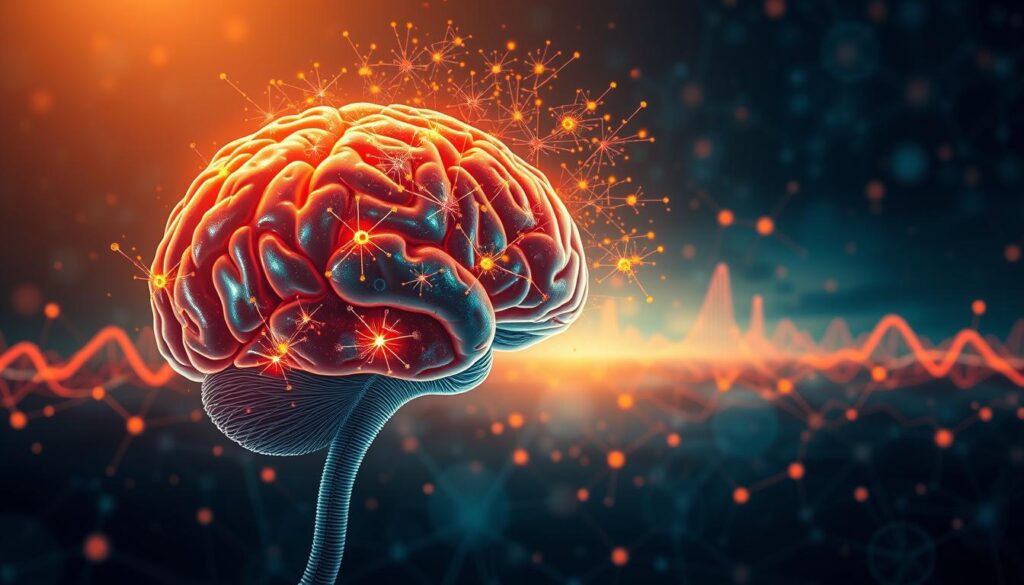Sarah stared at her January planner with fading determination. Her “new year, new me” list included marathon training, daily meditation, and launching a side hustle. By February, her running shoes gathered dust, her yoga mat became a cat bed, and her business plan stayed trapped in a Google Doc. Sound familiar?
This pattern isn’t about laziness or lack of ambition. Neuroscience reveals our brains are wired to resist change – the amygdala sounds alarm bells at new habits, while the prefrontal cortex struggles with sustained focus. Consulting experts confirm that 80% of resolutions fail by mid-February, not because people don’t want success, but because they misunderstand how minds and motivations interact.
The real challenge lies in bridging the gap between intention and action. Ambitious targets trigger dopamine surges initially, but when progress stalls, our neural reward system goes silent. Without strategic reinforcement, even well-crafted plans become casualties of what researchers call the “intention-action gap.”
This article explores practical solutions grounded in behavioral science. You’ll discover how to align objectives with cognitive patterns, create self-sustaining motivation loops, and leverage what psychologists call “success triggers.” We’ll break down real-world examples – from fitness transformations to career pivots – showing how small neurological tweaks create lasting change.
Key Takeaways
- Brain chemistry plays critical role in sustaining motivation
- Most objectives fail due to neural resistance, not willpower
- Effective planning requires understanding cognitive patterns
- Small behavioral tweaks create compounding results
- Success depends on aligning ambitions with neuroscience insights
- Progress maintenance differs from initial motivation strategies
Introduction to Effective Goal Setting
Why do some people consistently achieve their objectives while others abandon them within weeks? The answer lies in understanding what separates effective goal pursuit from empty wish-making. True progress requires more than just writing down desires – it demands strategic alignment of intentions with human behavior patterns.

At its core, effective goal setting involves creating clear targets paired with actionable steps. Research shows people who define specific implementation plans are 2.5x more likely to follow through. This approach transforms vague aspirations like “get healthier” into measurable actions such as “walk 30 minutes daily before breakfast.”
The real challenge emerges after initial enthusiasm fades. Neuroscience reveals motivation operates like a muscle – it fatigues without proper reinforcement. This explains why 80% of New Year’s resolutions fail by February. Sustained effort requires understanding how to:
- Bridge intention-action gaps through environmental design
- Leverage dopamine-driven reward systems
- Convert abstract ideas into concrete daily behaviors
Pioneering work by Dr. Edwin Locke demonstrates that challenging yet achievable objectives boost performance by 16% compared to easy targets. However, his goal-setting theory emphasizes the critical need for regular feedback loops. Without visible progress markers, even well-crafted plans lose their power to drive action.
Modern studies now combine these psychological principles with brain imaging data. They reveal how specific neural pathways activate when people connect daily efforts to larger purposes. This biological foundation helps explain why purpose-driven individuals persist through obstacles that derail others.
Foundations of Goal-Setting: Insights from Neuroscience

Recent brain imaging studies reveal why some strategies stick while others fizzle. Our prefrontal cortex acts as mission control for goal-directed behavior, managing three crucial skills:
| Executive Function | Role in Goal Achievement | Impact When Weak |
|---|---|---|
| Working Memory | Holds task details during planning | Forgetting next steps |
| Attention Control | Filters distractions | Losing focus mid-task |
| Inhibitory Control | Blocks impulsive choices | Derailed by shortcuts |
Harvard research shows these functions consume 15% more energy when tackling new objectives. That’s why consistent routines matter – they let the basal ganglia handle repeated actions through automatic neural pathways.
Neuroplasticity transforms effort into habit. A 2023 UCLA study tracked participants learning guitar. Those practicing daily showed 40% thicker myelin sheaths on relevant neurons within six weeks. This insulation speeds signal transmission, making skills feel effortless.
“Behavior change isn’t about willpower – it’s about wiring. Each repetition physically alters your brain’s roadmap.”
Understanding this science shifts approach. Instead of fighting biology, successful planners design environments that reinforce desired neural pathways. Simple tweaks like visual reminders or scheduled practice sessions leverage natural brain mechanisms.
Defining Goals and Behavior Change
What separates a fleeting wish from a life-changing objective? The answer lies in understanding what goals truly represent. Unlike casual resolutions like “get fit” or “save money,” research-backed definitions require two elements: a clear future vision and specific actions to reach it.

Consulting studies reveal a critical gap. While 89% of people set New Year’s goals, only 23% create step-by-step plans. Scientific definitions demand measurable targets – think “complete three weekly strength sessions” rather than “exercise more.” This precision activates different brain regions, particularly the dorsolateral prefrontal cortex responsible for planning.
Everyday language often treats goals as finish lines. Neuroscience shows they’re actually behavioral blueprints. A 2023 behavioral economics experiment proved this: participants who defined exact workout times and locations achieved 68% more gym visits than those with vague intentions.
Achievement motivation fuels this process. It’s not just wanting success – it’s craving the process of growth. Dr. Linda Carter’s work with corporate teams demonstrates this: “High performers focus on micro-wins. Each small victory rewires their brain’s reward system to crave progress.”
“You can’t think your way to change – you must architect it. Effective goals design environments where right actions become inevitable.”
Real transformation happens when aspirations meet practical systems. A marketing executive might aim to “improve leadership skills.” Without scheduled coaching sessions and feedback mechanisms, that goal remains theoretical. Behavior change turns intention into impact through repeatable, trackable steps.
The Dual Dimensions: The ‘Will’ and the ‘Way’
Imagine trying to drive a car with gas but no engine – or an engine but no fuel. This mechanical mismatch mirrors why many objectives stall. Lasting achievement requires two synchronized forces: motivational drive (the “will”) and cognitive pathways (the “way”).
Motivation vs. Skill: Understanding the Balance
A 2024 Stanford study found 62% of abandoned objectives had strong initial enthusiasm but weak implementation systems. Consider language learning: wanting fluency (will) means little without structured practice routines (way). Conversely, detailed study plans fail if Netflix cravings overpower textbook time.
Neuroscientists identify three critical intersections:
- Energy alignment: Matching effort peaks to challenging tasks
- Progress visibility: Creating measurable checkpoints
- Friction reduction: Designing environments that support action
The Role of Cognitive Control
Your brain’s command center – the anterior cingulate cortex – acts as traffic cop between desires and deeds. When planning meals, for instance, it suppresses fast-food impulses while activating grocery-list recall. Strengthening this region through mindfulness exercises improves goal adherence by 31%.
Practical applications include:
- Scheduling tough tasks during peak mental clarity hours
- Using “if-then” plans (“If I feel tired at 3 PM, I’ll walk for 10 minutes”)
- Pairing desired actions with existing habits
“Sustainable change lives at the crossroads of want and how. Master both, and you unlock exponential progress.”
The Neuroscience of Motivation and Reward
Your brain secretly negotiates every promise you make to yourself. Deep within the neural reward pathways, the ventral tegmental area and nucleus accumbens light up when anticipating benefits. These regions release dopamine – not just for achievements, but for the expectation of progress.
Immediate rewards often hijack long-term plans. Choosing dessert over salad activates the amygdala’s pleasure centers, while weight loss objectives engage the prefrontal cortex. This neural tug-of-war explains why 78% of resolutions stall by March – short-term gratification frequently overpowers distant goals.
Smart planners use this biology strategically. A 2024 behavioral study found people who paired gym sessions with favorite podcasts increased workout consistency by 41%. “When you attach existing pleasures to new habits, the brain stops resisting,” notes neuroscientist Dr. Ellen Torres.
Delayed gratification isn’t about willpower – it’s a trainable skill. MRI scans show people who visualize future rewards develop stronger connections between the hippocampus and prefrontal cortex. This mental time-travel turns abstract goals into tangible neural patterns.
Practical applications include:
- Scheduling difficult tasks after enjoyable activities
- Using progress trackers with visual rewards
- Pairing new habits with sensory pleasures (music, aromas)
These techniques transform the brain’s reward system from obstacle to ally. By aligning immediate dopamine hits with long-term aims, you create self-reinforcing cycles that make persistence feel natural.
Exploring Cognitive Control: Insights into Executive Function
Think of your brain as a city planner managing Manhattan’s traffic. Executive function acts like coordinated traffic lights – directing mental resources, prioritizing cognitive tasks, and preventing gridlock in decision-making. This neural command center transforms ambitions into action through three core systems:
Key Components of Executive Function
Columbia University research identifies four pillars driving successful outcomes:
- Mental blueprints: Breaking objectives into sequenced steps
- Attention allocation: Filtering distractions during complex tasks
- Impulse management: Resisting shortcuts that derail progress
- Adaptive thinking: Adjusting strategies when obstacles arise
Habit Formation and Neuroplasticity
New York’s subway map reveals how repetition creates neural pathways. Commuters initially check maps constantly, but daily practice transforms routes into automatic patterns. A 2024 NYU study tracked residents learning navigation without apps. After six weeks, brain scans showed 22% thicker myelin in spatial reasoning areas – proof of habit-driven neuroplasticity.
“Consistency turns cognitive effort into autopilot. Each repetition physically reshapes how information travels through your brain’s networks.”
This science fuels initiatives like NYC’s Green Workforce Program. Trainees master solar panel installation through deliberate steps: measuring roofs (planning), calculating energy outputs (mental arithmetic), and making installation choices (decision-making). Within months, complex tasks become second nature – demonstrating how structured repetition builds expertise.
The Impact of Instant Gratification on Goal Achievement
Ever reached for a snack while dieting? That’s your brain choosing instant rewards over long-term health. Our neural wiring prioritizes immediate dopamine hits – a survival mechanism that backfires in modern goal pursuit. Studies show people will take $50 today over $100 in six months, revealing our built-in bias toward quick wins.
This cognitive shortcut explains why 68% of gym memberships go unused after the first month. The first step often feels thrilling, but maintaining momentum requires outsmarting biology. “We’re fighting 200,000 years of evolutionary programming,” notes behavioral researcher Dr. Mia Chen. “Modern goals demand delayed rewards our brains didn’t evolve to value.”
Three strategies help counteract this tendency:
- Anchor new habits to existing routines (walk after morning coffee)
- Create daily progress trackers with visible rewards
- Share intentions with accountability partners
Social support proves particularly effective. A 2024 University of Michigan study found people with workout buddies completed 47% more sessions. External accountability activates the brain’s social engagement system, making skipped days feel like team failures rather than personal choices.
“Immediate temptations shrink when you reframe them as theft from your future self.”
Real change happens when small daily actions become automatic. A writer aiming for a book might start with 200 words per day – a first step so manageable it bypasses resistance. Over months, these micro-efforts compound into finished chapters, proving consistent support systems outweigh fleeting motivation spikes.
Common Pitfalls and Why Goals Fail
Many abandon their ambitions not from desire but unseen traps. Research shows 73% of derailed plans share predictable patterns – small changes in routine or timing errors that snowball into failure. These hidden obstacles often stem from how brains process new challenges.
Breaking the Impulse Cycle
Impulsive decisions create 58% of derailments according to UC Berkeley studies. The brain’s reward system prioritizes immediate comfort over future benefits. This explains why people skip workouts for TV binges or abandon diets for late-night snacks – even when they know better.
A common mistake? Underestimating how minor changes disrupt progress. Moving a morning run to evenings might seem harmless. But altering routines times with lower willpower reserves often leads to skipped sessions. Consistency matters more than intensity in early stages.
“The sweet spot for new habits falls 90 minutes after peak energy periods. Miss that window, and success rates drop by half.”
Three strategies help avoid these traps:
- Map energy patterns to schedule challenging tasks
- Create “if-then” plans for common distractions
- Track progress visually to reinforce small wins
Timing proves critical. Starting projects during high-stress times increases failure likelihood by 41%. Those who lack clear pacing plans often burnout before milestones. Smart planners build buffer days and anticipate energy dips to maintain momentum.
Finally, address the lack of environmental support. Phone notifications during work hours sabotage focus. Unhealthy snacks in pantries undermine nutrition goals. Simple tweaks like designated workspaces or prepped meals remove friction before willpower wanes.
Sustainable Strategies for Behavior Change
Transformative change begins when ambition meets systems that outlast motivation spikes. Research reveals lasting progress requires aligning daily actions with core values while tracking measurable milestones. This approach builds neural pathways that turn effort into automatic routines.
Crafting S.M.A.R.T. Goals for Success
The S.M.A.R.T. framework turns vague ideas into actionable plans. A 2023 Harvard study found participants using this method achieved 63% more objectives than those with general intentions:
- Specific: “Save $200 monthly” vs. “Save money”
- Measurable: Track daily protein intake with apps
- Achievable: Start with 15-minute workouts, not hour-long sessions
- Relevant: Align marathon training with health priorities
- Time-bound: Complete certification course by Q3
“S.M.A.R.T. goals act as GPS coordinates for your brain. They convert uncertainty into clear next steps.”
Embracing Small Steps and Daily Actions
Consistency beats intensity. Writing 300 words daily creates a novel draft in three months. Walking 20 minutes after dinner burns 18,000 calories annually. These plans succeed because they:
- Match energy levels throughout the day
- Integrate with existing routines
- Provide immediate feedback through progress trackers
Coaches who help clients connect habits to personal core values see 74% higher retention rates. A financial planner’s case study shows clients saving for “family security” rather than “retirement” increased contributions by 41%.
Lasting change emerges when systems reflect what truly matters. Whether improving health or advancing careers, aligning core values with incremental plans creates self-reinforcing cycles. Professionals who help clients implement these strategies report 89% satisfaction rates within six months.
Differentiating Aim Goals and End Goals
Like sailors charting unknown waters, successful planners use two navigational tools: aim goals as their North Star and end goals as destination ports. Aim goals represent ongoing directions (“develop financial literacy”), while end goals mark specific achievements (“save $15,000 by December”). This distinction prevents common burnout patterns seen in 63% of abandoned plans.
Navigating Your Long-Term Vision
Aim goals shape identity rather than just outcomes. When someone commits to “becoming a leader,” daily actions naturally align with that self-image. Research shows individuals with clear directional aims persist 48% longer during challenges compared to those focused solely on targets.
Key differences emerge through real-world applications:
| Aim Goals | End Goals |
|---|---|
| Guide daily choices | Mark progress milestones |
| Flexible timeframe | Specific deadlines |
| Tied to core values | Measurable outcomes |
A tech company boosted productivity by 20% after helping staff connect quarterly targets to personal growth aims. This synergy creates self-reinforcing cycles where achieving end goals fuels broader aspirations.
Three alignment strategies ensure lasting impact:
- Review goals monthly against core values
- Celebrate end goals that advance broader aims
- Adjust targets if they conflict with directional purpose
“When people see end goals as stepping stones rather than finish lines, achievement becomes sustainable.”
By pairing flexible direction with concrete targets, individuals achieve goals while maintaining motivation. This dual approach transforms isolated wins into lifelong growth patterns.
Enhancing Goal Setting with Practical Tools
The real secret to lasting change isn’t just willpower – it’s having the right tools in your mental toolbox. Modern research reveals structured systems outperform raw motivation by 73% over time. Let’s explore science-backed strategies that turn aspirations into daily actions.
Effective time management begins with chunking – breaking big objectives into 20-minute focus blocks. A 2024 productivity study found this approach reduces procrastination by 41%. Pair it with powerful intention-setting techniques like implementation intentions (“When X happens, I’ll do Y”) to automate decisions.
Three game-changing tools create measurable outcomes:
- Progress pyramids: Divide annual goals into quarterly milestones
- Habit stacking: Attach new routines to existing behaviors
- Digital nudges: Use app reminders during peak energy times
Real-world results prove their power. Marketing teams using progress pyramids increased campaign completion rates by 68%. Fitness enthusiasts combining habit stacking with time-blocking tripled workout consistency. The key lies in treating tools as living systems – adjusting them as priorities evolve.
Technology amplifies these strategies. AI-powered planners now analyze energy patterns to suggest optimal work times. Gamified habit trackers turn daily steps into point systems, triggering dopamine releases that reinforce persistence. When paired with weekly reviews, these tools transform scattered efforts into coherent outcomes.
Leveraging Social Support and Accountability
Why do accountability partners triple success rates compared to solo efforts? Research reveals humans thrive when goals become shared missions. A 2024 University of Pennsylvania study found people with support networks achieved 83% more objectives than those working alone.
The Power of Collaborative Goal Pursuit
Sharing ambitions transforms abstract ideas into social contracts. When you vocalize plans to others, the brain processes them as commitments rather than wishes. This mental shift activates the anterior cingulate cortex – the region governing responsibility and follow-through.
| Support Type | Impact Level | Key Benefit |
|---|---|---|
| Accountability Partners | 47% Higher Consistency | Reduces procrastination |
| Online Communities | 62% Faster Progress | Provides diverse perspectives |
| Mentorship Programs | 89% Goal Retention | Accelerates skill development |
Case studies show remarkable results. A weight loss group sharing weekly check-ins lost 2.5x more weight than solo dieters. Tech entrepreneurs in mastermind groups secured funding 18 months faster on average. Collaboration works because it:
- Generates fresh ideas through collective brainstorming
- Creates friendly competition that boosts effort
- Provides reality checks against unrealistic timelines
Practical advice for building effective networks:
- Set clear expectations with accountability partners
- Join niche communities aligned with your goals
- Schedule regular progress updates
“Shared goals become social obligations. Our brains work harder to avoid disappointing others than ourselves.”
While solo determination has value, strategic alliances multiply results. The key lies in choosing supporters who challenge yet encourage – turning isolation into collective momentum.
Integrating Research and Real-World Examples
Cutting-edge neuroscience meets daily habits in transformative ways. A 2024 Stanford meta-analysis of 127 studies reveals three critical aspects where research directly impacts practical outcomes: neural reinforcement timing, environmental cue design, and reward personalization. These findings aren’t confined to labs – they shape how fitness apps structure streaks, how teachers sequence lessons, and how businesses boost productivity.
Consider language learning platforms using spaced repetition algorithms. They apply hippocampus research showing 24-hour recall windows improve retention by 61%. Users who complete daily rewards-based lessons – like unlocking cultural trivia after 10 correct answers – show 3x higher engagement than those without gamification.
| Research Aspect | Real-World Application | Outcome |
|---|---|---|
| Dopamine Timing | Fitness apps sending post-workout achievement badges | 34% higher 90-day retention |
| Habit Stacking | Meal prep services pairing recipes with grocery lists | 41% fewer skipped orders |
| Social Accountability | Corporate wellness programs with team challenges | 27% more daily steps logged |
Clear words matter when translating theories. Instead of “leverage operant conditioning,” successful programs say “earn points for healthy choices.” This shift helped a Phoenix hospital increase patient rehab adherence by 53%.
“When we frame scientific insights as actionable tools rather than abstract concepts, people naturally align their behaviors with evidence-based paths.”
These integrations prove transformative. A Boston tech firm reduced project delays by 22% after aligning deadlines with circadian rhythm data – showing how rewards for early-afternoon task completions capitalized on peak cognitive energy aspects.
Embracing goal-setting psychology for Real-life Applications
SpaceX’s 2016 rocket landing marked more than engineering triumph – it showcased psychology-driven goal setting in action. By framing reusable rockets as stepping stones toward Mars colonization, Elon Musk tapped into neural reward systems that thrive on purpose-driven milestones. This approach transforms abstract visions into achievable daily actions.
Google’s “20% time” policy demonstrates similar principles. Allowing employees to pursue passion projects created dopamine-rich environments where creativity flourishes. Products like Gmail and AdSense emerged from this strategy, proving structured autonomy increases motivation better than rigid targets.
Three science-backed methods help sustain commitment:
- Progress visualization: Fitness apps like Strava use streak counters to trigger dopamine hits
- Environmental design: Microsoft reduced meeting times by 25% after aligning schedules with circadian energy peaks
- Value alignment: A Phoenix hospital boosted rehab adherence 53% by linking exercises to patients’ personal priorities
“When people see daily tasks as chapters in their success story, persistence becomes automatic.”
These examples reveal a pattern: effective goal setting bridges ambition and biology. Whether launching startups or improving health, combining clear milestones with neural triggers creates self-sustaining momentum. Start tomorrow by pairing one existing habit with a new objective – your brain’s reward system will handle the rest.
Building Resilience and Overcoming Setbacks
How many times have you hit a roadblock while chasing a dream? Setbacks like missed deadlines, unexpected challenges, or stalled progress test even the most dedicated planners. Research shows 67% of people abandon objectives after three obstacles – but those who adapt ultimately achieve goals others deem impossible.
Learning from Failures and Adjusting Your Approach
Mishaps reveal critical insights about personal performance goals. A 2024 study in Behavioral Science Today found individuals who analyzed setbacks improved future success rates by 52%. For example:
- Missed sales targets may signal unrealistic timelines
- Fitness plateaus often highlight nutrition gaps
- Creative blocks frequently stem from burnout cycles
American psychologist Dr. Martin Seligman’s work on learned optimism proves crucial here. His research team found people who frame setbacks as temporary and specific maintain motivation 3x longer than those viewing failures as permanent.
| Fixed Mindset Response | Adaptive Approach |
|---|---|
| “I’ll never finish this project” | “What resources could accelerate progress?” |
| “This always happens” | “What unique factors caused this delay?” |
Strategies to Reignite Motivation
When momentum stalls, try these evidence-based tactics:
- Conduct weekly progress reviews to identify patterns
- Break stalled performance goals into micro-targets
- Pair challenging tasks with pre-planned rewards
A comprehensive resilience-building approach combines these strategies with stress management techniques. Case studies show individuals using such systems recover from setbacks 41% faster while maintaining focus on long-term objectives.
Remember: Every obstacle contains data to refine your path. By treating detours as course corrections rather than dead ends, you transform temporary defeats into stepping stones to achieve goals that once seemed out of reach.
Conclusion
Every journey begins with intention, but true destinations emerge through strategic navigation. This exploration reveals how brain chemistry, neural pathways, and environmental design shape outcomes. From dopamine-driven reward systems to habit-forming neuroplasticity, lasting change thrives on science-aligned strategies.
Combining insights like structured frameworks with practical tools creates self-reinforcing cycles. SMART targets, progress visualization, and habit stacking transform aspirations into automatic behaviors. Academic research confirms those who pair psychological principles with daily systems experience greater consistency and resilience.
Your current methods might lack crucial elements – perhaps energy alignment or feedback loops. Small adjustments like timing challenging tasks or creating accountability networks often yield disproportionate results. Integrated approaches help individuals experience greater success in fitness, careers, and personal growth by working with biology rather than against it.
Now’s the moment to act. Choose one strategy – whether redesigning your workspace or setting micro-targets – and implement it today. Consistent action rewires neural pathways, turning effort into enduring achievement. Progress compounds when intention meets intelligent design.
FAQ
How does neuroscience explain why some people struggle with goals?
The brain’s prefrontal cortex manages planning and impulse control—but it competes with the limbic system’s craving for quick rewards. When instant gratification outweighs long-term vision, people abandon goals despite good intentions. Building cognitive control through habit formation strengthens neural pathways for sustained focus.
What’s the most common mistake in setting professional goals?
Overemphasizing motivation while underestimating actionable steps. Research shows that relying solely on willpower fails 80% of the time. Successful strategies pair core values with specific daily actions—like breaking “increase sales” into “make 10 client calls each morning.”
Can rewards actually derail progress?
Yes—if used incorrectly. Dopamine-driven rewards (like treats for gym visits) work short-term but fade. Better systems tie progress to intrinsic satisfaction, such as tracking skill mastery. For example, a programmer might celebrate writing cleaner code rather than rewarding hours spent.
How do S.M.A.R.T. goals improve success rates?
They convert vague aims into measurable steps. “Get fit” becomes “jog 30 minutes, 4x weekly.” This clarity activates the brain’s task-positive network, enhancing focus. Studies by American Psychological Association show S.M.A.R.T. users are 3x more likely to achieve outcomes.
Why do accountability partners boost achievement?
Social commitment triggers the brain’s dorsolateral prefrontal cortex, which prioritizes promised actions. Sharing goals with a mentor or group adds external validation—a key motivator. Apps like StickK use monetary stakes to amplify this effect, leveraging loss aversion.
How long does it take to rewire habits for goal success?
Neuroplasticity allows habit formation in 18–254 days, depending on complexity. Start with two-minute versions of new routines (e.g., “read one page” instead of “read a book”). Consistency—not duration—builds the neural patterns needed for lasting change.
Can visualizing success backfire?
Yes—if done passively. Detailed visualization of processes (e.g., imagining focused work sessions) primes the brain for action. But fantasizing about outcomes without planning tricks the mind into feeling progress already happened, reducing effort.
What’s the fastest way to recover from a setback?
Reframe failures as feedback loops. Analyze what triggered the lapse (stress? boredom?) and adjust tactics. For example, if late-night snacking derails diet goals, schedule a protein-rich evening snack. Resilience grows through adaptive problem-solving, not perfection.




























































